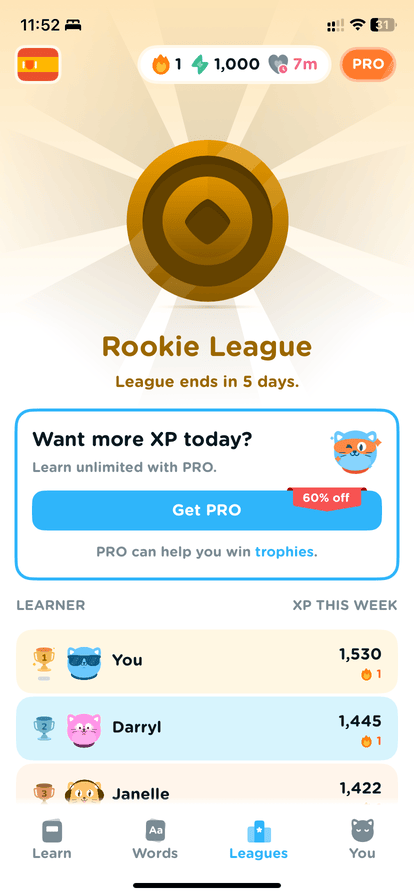Gamification
What leads individuals to repeatedly engage in the same activities within games, resulting in prolonged engagement, whereas in other applications, users often end up bored and churn out?
Game mechanics drive sustained engagement
Gamification, a human-focused design approach, motivates users for long-term engagement by first establishing motivation and then designing the user journey. This contrasts with function-focused design, which assumes users are inherently motivated. Gamified elements such as unlockable features, leaderboards, and reward mechanisms can make a product more entertaining and incentivise user engagement, improving retention metrics. The effectiveness of gamification is evident in games where users repeatedly engage in the same activities, unlike other applications where users may grow bored and discontinue use.
For instance, below are some of the gamified elements which not only make the product more entertaining but also create incentives for users to stay actively involved, resulting in increased engagement and improved retention metrics.
Streak Mechanics
This offers users a sense of progression, encouraging them to return for more interactions with the product. Cult.Fit has introduced Fitness Journey to encourage the user to book the sessions and while booking it shows the benifit you unlock
How Cult.fit Uses Streak Mechanic
- Cult.fit encourages users to attend workouts consistently by tracking daily/weekly streaks.
- Maintaining a streak unlocks rewards like badges, leaderboard rankings, and exclusive perks.
- Breaking a streak adds a psychological loss aversion factor, pushing users to stay consistent in their fitness journey.
This keeps users motivated, turning fitness into a habit through gamification.

Milestone Unlock
A milestone mechanic rewards users when they hit specific progress points, encouraging continued participation by breaking a big goal into smaller, achievable steps.
Google Pay (GPay) Rangoli Fest / Shaguns Campaign:
GPay uses milestone mechanics by giving users small rewards or collectibles (like Rangoli pieces or Shagun tokens) every time they complete certain actions (sending money, paying bills, etc.). Once users collect all pieces or hit a milestone, they unlock bigger rewards (cashbacks, coupons). This keeps users coming back to complete the set and reach the milestone.

Variable Rewards
Variable rewards, inspired by slot machines, provide unpredictable incentives to keep users engaged. The uncertainty of rewards triggers excitement and anticipation, encouraging repeated actions.
How GPay Uses It – Tez Shots
- In GPay’s Tez Shots, users play a cricket-style mini-game where each shot yields a random reward.
- The unpredictability (cashbacks, vouchers, or nothing) mimics a slot machine effect, keeping users hooked.
GPay Uses randomized rewards to create excitement and repeat engagement.

Leaderboard
Leaderboards rank users based on performance, adding competition, motivation, and engagement by providing social comparison and recognition.
How Airlearn Uses Leaderboards in Its Learning App
- Airlearn’s leaderboard ranks learners based on quiz scores, course progress, and engagement.
- Top performers earn badges, certificates, or exclusive rewards, encouraging continuous learning.
- The competitive element pushes users to stay active and improve their rankings.
This gamified approach makes learning more interactive, rewarding, and socially engaging
